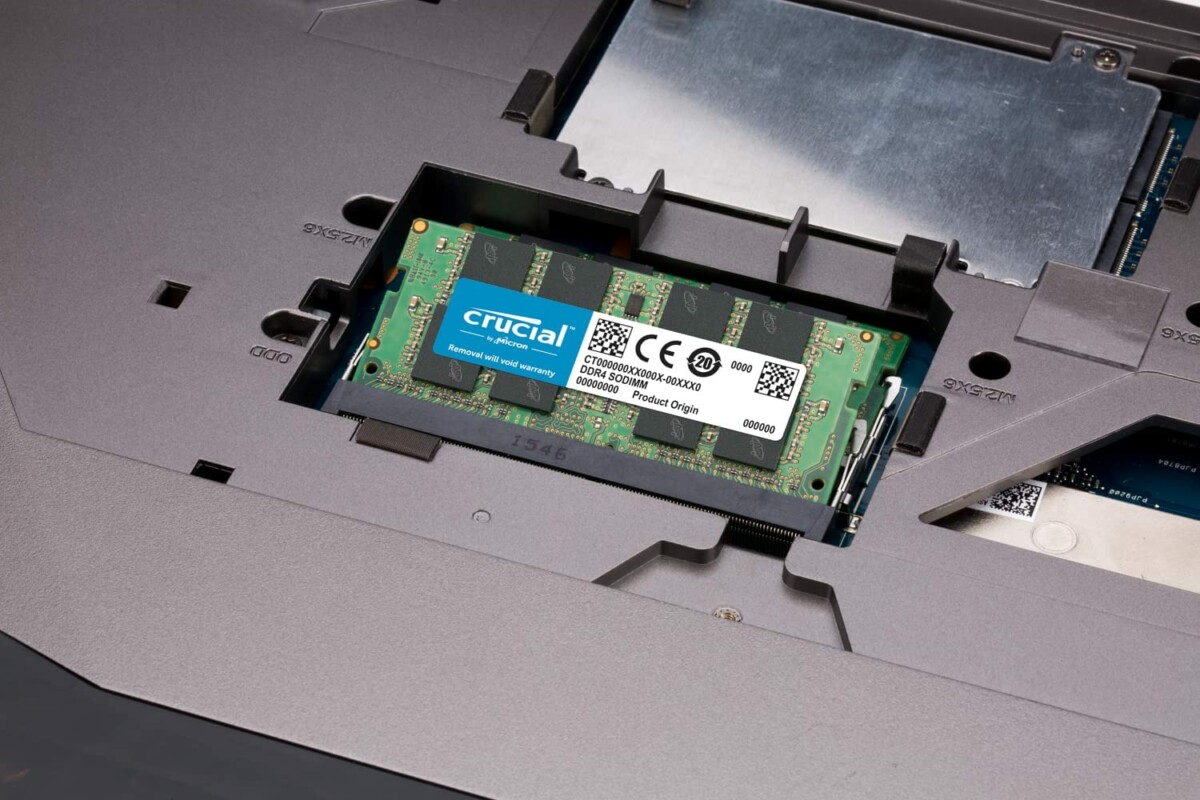Very promising, RAM in LPCAMM2 format is starting to make waves in the portable PC field… but despite its strong potential, its chances of changing the face of the market seem low. At least for the moment.
Mentioned in our columns at the beginning of 2023 and adopted by JEDEC at the end of the year, the CAMM2 standard is a new form-factor of RAM intended for our future laptop PCs. Its asset? Allow the appearance of smaller and faster modules than traditional SO-DIMM RAM, and which can be available in the form of small LPCAMM2 modules capable of competing very effectively with the current LPDDR5X standard.
For context, the form-factors SO-DIMM and LPDDR5X coexist on current laptop PCs. The first category comes in the form of strips, most often installed on devices of 15 inches and above, dedicated to gaming and creative uses. Its advantage is that it offers good scalability (these strips can be easily replaced). Installed on board ultraportable PCs (in particular), the second turns out to be less energy intensive and often faster… but has the big disadvantage of being soldered on the motherboard of the equipped machines, preventing any scalability.
More RAM, more speed
The interest of the LPCAMM2 is to take the main advantages of the LPDDR5X, and in particular its speed, but through modules that can be mounted and disassembled on the motherboard – like SO-DIMM strips. As pointed out TechRadar, this technology is also the first “LP” and modular solution on the market. A small revolution, at least on paper, for laptop designers, but also for users.

Another advantage of the LPCAMM2 format is that it allows the integration of two 16 GB components on a single strip. A good way to reduce clutter on the motherboard. On laptops gamers for example, using LPCAMM2 can save 64% space compared to including two SO-DIMMs. This new standard could thus open the way to devices gaming more compact, or even lighter.
It would be too late
Despite its many advantages, the LPCAMM2 standard nevertheless risks having a long life, and this for a basely economic reason: the need to use a socket different from that required for more traditional types of RAM. From an industrial point of view, this particularity is welcomed with a certain reluctance by manufacturers of laptops, because it will lead (at least initially) to an increase in production costs. Subsequently, and thanks to the use of a single module occupying two memory channels, production costs should drop.
That said, this initial barrier to adoption seems powerful. It should significantly slow down the adoption of the LPCAMM2 standard in the market, especially since some manufacturers like Apple have no interest in embracing it. The firm indeed seems more inclined to subsequently integrate RAM directly into its processors. An approach which has the particular advantage of reducing the bottleneck effects in CPU / RAM exchanges. An approach that we should see imitated by Intel and other Apple competitors in the sector. If the RAM is integrated into the chip, then there is no longer even a need for a standard to integrate it into the motherboard.
